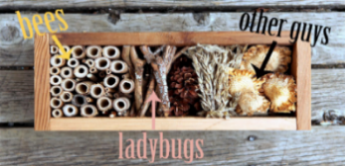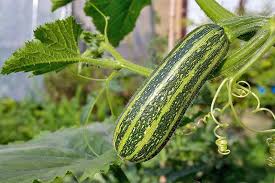Predator & Prey Simulation Activity
Watch the video How Wolves Change Rivers: to activate prior knowledge and students’ experience of P&P at the Island
Have students brainstorm and research the direct connection between their everyday habits/actions and the negative impact on biodiversity. Some examples:
- Electronics created through mining which affects habitats
- Plastic packaging uses lots of energy to create and end up polluting and possibly harming animals
- Food waste increases energy wasted in production and transportation attributing to climate change
Have students take action with the following activities:
- Write a story, draw a picture or create a poem from the perspective of threatened wildlife
- Create an “I Promise” board, a list of actions students take to help the earth
- Plant window boxes, trees or a garden to create green space
- Create a public service announcement, poster or postcard around a biodiversity issue
- Develop an action campaign on an environmental issue and write to your local MPs and MPPs
Survival
- Try making bannock at school or at home
- Recipe for 1: 1 tbsp Bisquick, pinch of sugar or maple syrup, 1/4 tsp of water. Mix and roll into a small biscuit shape. If too dry, add more water. Bake at 325 F. for 6 minutes or until brown.
- Write instructions for building a fire and cooking bannock
- Write a story/play where someone has to survive in the woods
- Read some first nations stories about survival and sustainable living
Photo Scavenger Hunt
- Draw a map of your school and community
- Make your own treasure book/photo book of landmarks
- Write a comparison of your community and the Island community. Say which community you would prefer to live in
Climate Change in the Community
- See the following Get Outside Lesson
- Draw a map of energy use in the community
- Make a scavenger hunt
Food and Climate Change
- Next time you go shopping, make a list of all the places your food comes from and compare
- Video: The Story of Stuff
- Draw a diagram showing the journey of a piece of clothing etc. coming to your home
Eco Art
Watercolours
- Make a display of the art that was made at Island School
- Have students write an artist’s statement for their art piece
- Research a Canadian watercolour artist and explore their work and inspirations (connecting to nature)
- Students can write a critique of another student's work or their own
- See critical analysis process: http://www.edu.gov.on.ca/eng/curriculum/elementary/arts18b09curr.pdf, Pp. 23-28G
Goldsworthy
- Ask the following reflection questions to frame the viewing of this video of Goldsworthy’s work (for example)
- What elements of art does he like to use?
- What do you think his art is about?
- How does his art impact you, others and the world?
- Explore other Canadian nature artists:
- Students can write a critique of another student's work or their own
- See critical analysis process: http://www.edu.gov.on.ca/eng/curriculum/elementary/arts18b09curr.pdf, Pp. 23-28
Acrylic Painting Inspired by Nature
- Make a display of the art that was made at Island School
- Have students write an artist’s statement for their art piece
- Research another Indigenous artists and explore their work, inspirations and cultural contributions
- Students can write a critique of another student's work or their own
- See critical analysis process: http://www.edu.gov.on.ca/eng/curriculum/elementary/arts18b09curr.pdf Pp. 23-28
Flight

- Design your own aircraft and have a competition
- Identify the different ways that birds fly (e.g. soar, flap, glide) and go outside and try to see these three ways that they fly
- Look at bird wings, bird feathers
- Watch: Bees in flight
- Watch Dragonfly flight
- Research Bees and their health
- Create an awareness around the school around bee health (ie. dandelions are the first food for pollinators so protect them!!)
- Build bee houses/insect hotels
- Watch: Introduction Ted Talk: Why Bees are Disappearing
- Save the Bees Campaign:
- Have students create a social media campaign, and create tweets around their schools that raises awareness on bee populations declining in Canada
- Have students build Insect hotels - Example
Biodiversity
- Make a display of their “leaves” (action plans)
- Plan a class action to help preserve biodiversity
- Identify and research a local issue that will have an impact on biodiversity (e.g. a new construction site; a new park)
- Create a picture/poem about your favourite living thing at the Island
Gardening

- Plant seeds and grow them in your classroom window
- Students bring in the ingredients for making salad - i.e, ingredients that could be grown in a Toronto garden (e.g., lettuce, kale, chard, chives, herbs, radish, mint, cucumber, etc.). Students make their own salad and salad dressing (i.e., vinegar, oil and herbs)
- Investigate a small “natural” garden plot on the schoolyard with magnifiers, etc.
- Visit a public garden/greenhouse (e.g., Allan’s Gardens)